#rob roy macgregor
Explore tagged Tumblr posts
Text
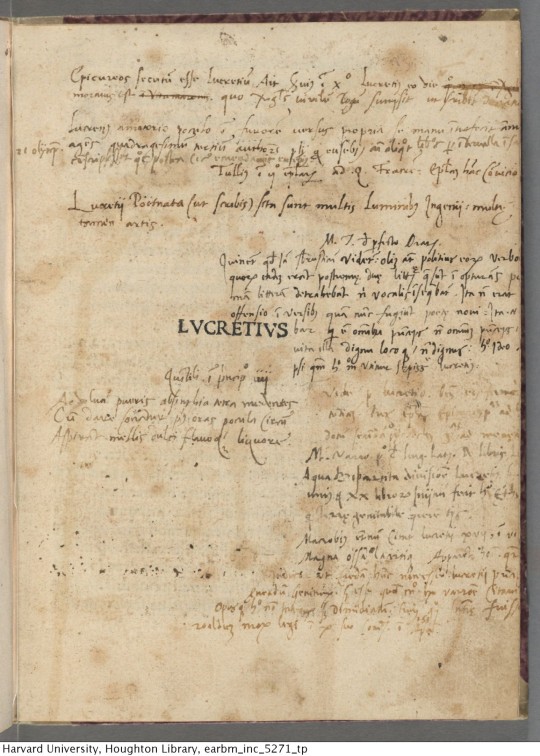
Rob Roy MacGregor notas a Lucrecio
2 notes
·
View notes
Text
Rov Roy The Highland Rogue (1954)
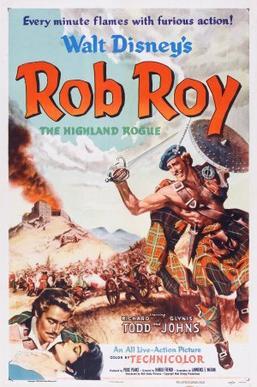
Rob Roy MacGregor
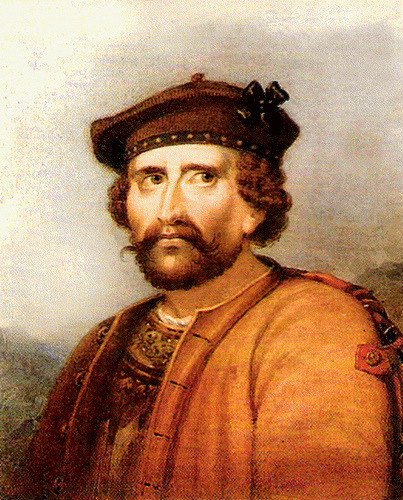
0 notes
Text
MacGregor

1671-1734
#Rob Roy#Scottish Highlander#Clan MacGregor#Jacobites#warrior#bandit#Scottish hero#1671-1734#Robert MacGregor#Jacobite uprising#tartans#Highlands#Scotland#UK
15 notes
·
View notes
Text
Morris: “Please torture me if it means I can stay alive. Just give me breath and do as you please to me! I’ll be in constant pain every day so long as I’m allowed to live—“
Helen: “BASE DOG! Your death shall be quick…”
Morris: “Please, no, Lady, have cruelty!”
Helen: “You may have had privileges in the Lowlands, but you have none here, whatsoever. Just because of your obstinance, your death will be instant… merciful, even. I refuse to spend any more time on you, dog, and son of a dog. You gobble up the scraps of our misfortune that the government throws you, and carry on with your life while we have to suffer for your sake. Fuck off.” [plunges him into the loch with a stone tied around his neck]
…
Meanwhile, in the year of our BB, 1984:
Winston: “I’m so tired…” [sobbing] “When will you shoot me?”
O’Brien: “Hm…” [picks Winston up like a banana, noting his color, smelling and pressing him in the middle to see how ripe he is] “Soon! But not yet.”
Winston: [fully breaks down]
O’Brien: “I’m spending time with you because you’re worth trouble, Winston. Don’t worry; your mind will be cleansed eventually… in about a month… give or take…”
#I’d like Helen MacGregor to meet O’Brien because she’d fucking obliterate him within fifteen seconds#rob roy#1984#sir walter scott#george orwell#I’d like her to do that thing she talked about to him#You know… the whole “cutting the tongues/hearts out of the enemy and placing them in each others’ throats/chests” thing#do that to the entirety of Miniluv staff that would be great#I’d love to see it#Anyway it’s just interesting how different characters in different situations react to death
5 notes
·
View notes
Text



W. H. Murray was born on March 18th 1913 in Liverpool.
Many of you might not heard of William Hutchinson Murray to give him his full name, but he arguably did more to popularise Scotland as a walking and climbing destination than anyone else in the past century, and that includes the late Tom Weir, who was largely only known to us Scots.
His father, who was killed at Gallipoli in 1915, had been an enthusiast for the outdoors, but it was not until 1934 that a passion for the mountains was awakened in Murray himself. He overheard a mountaineer talking of a weekend climb of An Teallach in in terms that made Murray dream of experiencing the mountains for himself.
So early in 1935 he set off for one of the very few mountains he had heard of in Scotland, The Cobbler, near Arrochar. This he climbed in winter, by himself, and without maps, proper clothing or equipment. As he says in his book, Undiscovered Scotland: "From that day I became a mountaineer." Murray spent the remainder of the 1930s walking and then climbing throughout the length and breadth of Scotland, becoming a particular pioneer of winter climbing in the Western Highlands. You have to note that nowadays Murray would have been slated for undertaking such a task without being suitably equipped, but this was in the days before health and safety.
At the outbreak of World War II he enlisted in the Argyll and Sutherland Highlanders and saw action in the Middle East and North Africa, but was captured by a German Panzer division in Egypt in 1942. A passage in Mountain magazine from 1979 describes the moments after his capture:
To my astonishment, he [the German tank commander] forced a wry smile and asked in English, 'Aren't you feeling the cold?' ... I replied 'cold as a mountain top'. He looked at me, and his eyes brightened. 'Do you mean – you climb mountains?' He was a mountaineer. We both relaxed. He stuffed his gun away. After a few quick words – the Alps, Scotland, rock and ice – he could not do enough for me.
He saw out the war in camps in Italy, Germany and Czechoslovakia and it was in these camps he started writing, paper was in short supply and he used the only paper available to him – rough toilet paper supplied by The Red Cross. The manuscript was found and destroyed by the Gestapo. To the incredulity of his fellow prisoners, Murray's response to the loss was to start again, despite the risk of its loss and that his physical condition was so poor from the near starvation diet that he believed he would never climb again. The rewritten work was finally published in 1947, Mountaineering in Scotland and it's follow up Undiscovered Scotland were best sellers and have an honoured place on the bookshelves of many enthusiasts.
Incarceration left its mark on many PoWs, but Bill Murray continued the activity he loved and in 1950 led expeditions to Garhwal and Almora in the Himalayas. He was deputy leader on the reconnaissance of Everest in 1951, but difficulties in acclimatising to the altitude excluded him from the successful assault by Edmund Hillary and Sherpa Tenzing on the world's highest peak in 1953.
In later life he wrote extensively - guidebooks, works of topography, magazine articles and fiction. He was awarded the Mungo Park Medal of the Royal Scottish Geographical Society in 1953, his work includes The Scottish Himalayan Expedition, Glencoe, Blackmount and Lochaber : a regional guide, Companion Guide to the Western Highlands of Scotland and Rob Roy MacGregor – His Life and Times, as well as several works of fiction
W.H. Murray played an increasingly important role in issues to do with the environment of Scotland from the 1960s onwards. In 1960 he surveyed Scotland's mountain areas for the National Trust for Scotland, and he served on the Countryside Commission for Scotland from 1968 to 1980. He was also Chairman of the Scottish Countryside Activities Council from 1968 to 1982; President of the Mountaineering Council for Scotland from 1972 to 1975; President of the Scottish Mountaineering Club from 1962, and Honorary President of it from 1989; and a founding Trustee of the John Muir Trust until 1986.
His autobiography, The Evidence of Things Not Seen: A Mountaineer's Tale, was completed on his death by his wife Anne, he passed away on March 18th 1996 a day after his 83rd birthday.
33 notes
·
View notes
Text
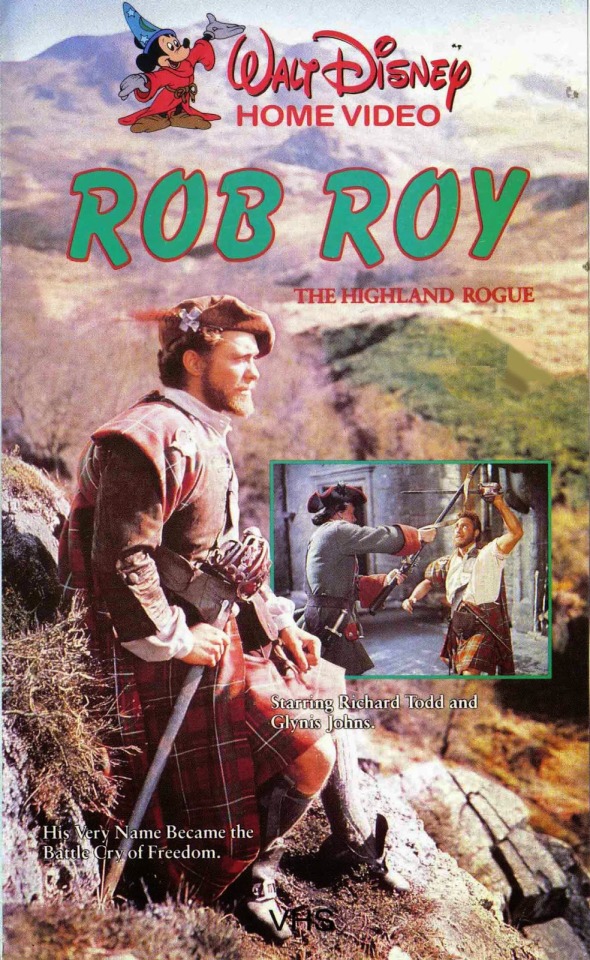
Starring Glynis Johns, James Robertson Justice and Richard Todd in the Title role, Rob Roy tells the story of the MacGregor Clan and their fight against King George during the Jacobite Uprising in 1715. After he returns home from the fighting, Rob Roy marries his beloved Helen. He is then arrested and the MacGregor Clan are not allowed to use their name. He is forced into a rebellion and ultimately wins his family's honor back. Rob Roy: The Highland Rogue was released in America on this day in 1954. It was the last picture released by Walt Disney through RKO Radio Pictures.
2 notes
·
View notes
Text
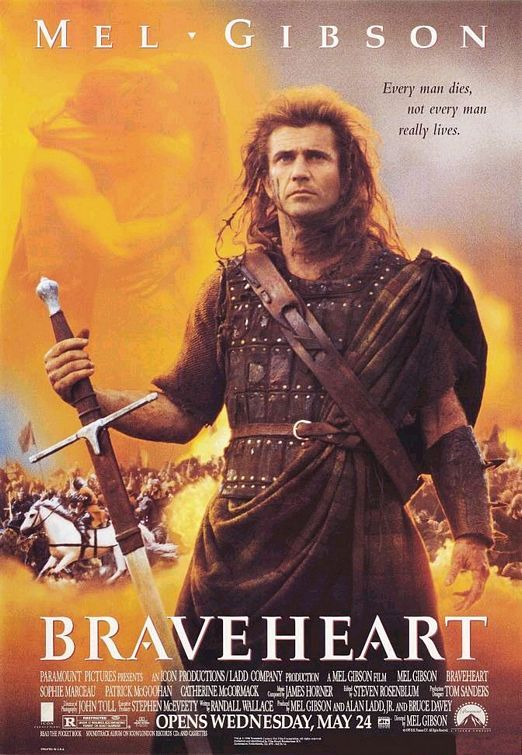

Braveheart:
It's Mel Gibson in a kilt as Scottish warrior William Wallace leading his countrymen in a rebellion against the tyranny of King Edward I of England. Romance, action, gorgeous scenery and an ending where he didn't just die, he was killed in a horribly gruesome manner. Like knowing this historical fact before the movie did not in the least prepare me for the devastating grief of seeing it happen once I'd come to care about the people involved.
Rob Roy!
Clan chief Rob Rob MacGregor fights to win back his honour and freedom after being unfairly outlawed. Both he and his wife go through hell and back, but in the end the bad guy is defeated, good triumphs, and the angst is followed by a happy ending.
9 notes
·
View notes
Text
OK, I had fun with Woman in White predictions, so now it's time for some Catriona predictions.
We already know that Davie will have:
Misfortunes anent the APPIN Murder
Troubles with Lord Advocate GRANT
Captivity on the Bass Rock
Journey into Holland and France
and Singular Relations with JAMES MORE DRUMMOND or MACGREGOR, a Son of the notorious ROB ROY, and his Daughter CATRIONA
Honestly it sounds like that's the whole plot of the book. But I'm going to have a go at some further predictions anyway.
I think misfortunes anent the murder, troubles with the lord advocate, and captivity are all part of the same thing - so Davie's captivity is going to be some manner of temporary or permanent imprisonment after tangling with the law.
I have no idea what the Bass Rock is and I'm resisting googling it, but I'm thinking it sounds like some kind of sufficiently remote island that you can dump prisoners on it without too much fear of them escaping.
However, Davie knows a thing or two about escaping from remote peninsulas islands so I reckon someone (Alan?) is going to rescue him. With swordplay and derring-do.
This will do nothing to stop me from picturing them as the Second Doctor and a weirdly tall Jamie.
Davie fleeing from the law will therefore be taken to the safety of the continent. There will be a ship. He will feel very confident and experienced about ships now.
He'll meet Catriona in *spins wheel* Paris and they will have a charming and romantic interlude together. Davie still being about 17, I think this will be mostly chaste, but full of tender promise for the future.
Davie will secure Catriona's dad's trust in some way - maybe by coming over all heroic again and saving Catriona's life?
Then her dad will somehow help with the process of getting Davie back to Scotland on the right side of the law.
Some non-plot related predictions:
Davie will not enter England at any point.
Davie will learn a very small bit of Gaelic, and pronounce it badly, and both Alan and Catriona will find this charming.
Davie will lose his shiny new sword at some point but...
He will have and win at least one swordfight.
For what it's worth I have significantly less confidence in any of these predictions relative to any of my Woman in White ones. No spoilers, please, I'm looking forward to finding out slowly just how wrong I am.
15 notes
·
View notes
Text
Deep dives into folklore: Scottish folklore

Scottish folklore is a rich tapestry woven with threads of ancient traditions, mythical creatures, and supernatural tales that have endured through the centuries. Rooted in the land's rugged landscapes, tumultuous history, and vibrant culture, Scottish folklore offers a captivating journey into the heart of a nation's imagination. This week we delve into the depths of Scottish folklore, exploring its origins, key themes, prominent characters, and enduring impact on the cultural identity of Scotland.
Origins and Influences:
The origins of Scottish folklore can be traced back to the early Celtic and Gaelic traditions that thrived in the region. These ancient beliefs were deeply connected to the natural world, with a profound respect for the land, sea, and sky. As Christianity spread across Scotland, it blended with existing folklore, giving rise to a unique fusion of pagan and Christian elements.
The landscape itself plays a crucial role in shaping Scottish folklore. The misty moors, rugged mountains, and mysterious lochs provided the perfect backdrop for tales of otherworldly encounters. From the verdant Lowlands to the remote Highlands, each region contributed its own distinct flavor to the rich tapestry of Scottish folklore.
Key Themes:
Faeries and Spirits: One of the central themes in Scottish folklore is the presence of magical beings such as faeries, brownies, and selkies. These creatures inhabit the hills, glens, and lochs, playing both benevolent and mischievous roles in the lives of mortals. The Seelie Court, representing the benevolent faeries, contrasts with the Unseelie Court, known for its darker and more malevolent inhabitants.
Mythical Creatures: Scotland is home to a myriad of mythical creatures, each with its own unique characteristics. The Loch Ness Monster, perhaps the most famous, is said to inhabit the deep waters of Loch Ness. Other creatures like kelpies, shape-shifting water spirits, and the fearsome wulver, a wolf-like creature with a human demeanor, add layers of complexity to the mythical bestiary of Scotland.
Witches and Warlocks: The witch trials of the 16th and 17th centuries left an indelible mark on Scottish folklore. Stories of witches and warlocks, casting spells and consorting with the devil, have permeated the cultural consciousness. The iconic character of Tam O'Shanter, immortalized in Robert Burns' poem, reflects the enduring fascination with supernatural forces.
Prominent Characters:
Braveheart and Outlaw Heroes: Scottish folklore is replete with tales of brave warriors and outlaw heroes who resist oppressive forces. Figures like William Wallace, the legendary leader of the Scottish Wars of Independence, and Rob Roy MacGregor, the renowned outlaw, have become larger-than-life symbols of resistance and freedom.
Tam Lin: The ballad of Tam Lin is a classic Scottish folk tale that weaves a tale of love, enchantment, and redemption. The story revolves around a mortal man, Tam Lin, ensnared by the Queen of the Faeries, and the courageous efforts of his lover to free him from the otherworldly grasp.
Scottish folklore continues to exert a profound influence on contemporary culture, literature, and the arts. The tales have inspired countless novels, poems, plays, and films, contributing to the enduring allure of Scotland's mythical past. The modern fascination with the supernatural, evident in popular culture phenomena like the Harry Potter series, draws on the deep well of Scottish folklore.
In conclusion, Scottish folklore stands as a testament to the resilience of oral traditions and the enduring power of myth. Its stories, passed down through generations, have shaped the cultural identity of Scotland, providing a lens through which to view the nation's history, values, and imagination. As we delve into the realms of faeries, mythical creatures, and heroic figures, we embark on a journey through the enchanted landscapes of Scotland's collective psyche, where the lines between reality and fantasy blur, and the magic of folklore continues to captivate hearts and minds.
Taglist (reblog/reply to be added):
@axl-ul @crow-flower @thoughts-fromthevoid @alderwoodbooks @harleyacoincidence @tuberosumtater @sonic-spade @theonlygardenia @holymzogynybatman @nulliel-tres @w0rkah0licz @sylvanthorn @tigertaurus22 @profiterole-reads @mathias-musings @1899adgg1997tbmd @grimmparanormalinvestigations @sylvanthorn
#writeblr#writers of tumblr#writing#bookish#booklr#fantasy books#creative writing#book blog#ya books#ya fantasy books#writers block#national novel writing month#writers#teen writer#tumblr writers#writblr#writer problems#writerblr#writers community#writers corner#writers on tumblr#writerslife#writerscommunity#writing blog#writing community#writers and poets#new books#book quotes#book review#book
18 notes
·
View notes
Text

Después de La Lista de Schindler Liam Neeson protagonizó Rob Roy ambientada en la Escocia de 1713, Rob Roy MacGregor es agraviado por un noble y su sobrino, se convierte en un proscrito en busca de venganza mientras huye de los casacas rojas y se enfrenta a la acusación de ser jacobita.
6 notes
·
View notes
Text
Birthdays 3.7
Beer Birthdays
Conrad Pfeiffer (1854)
Sean Burke (Commons Brewery)
Chad Kennedy (Laurelwood; Worthy Brewing)
Christian Weber (Common Roots Brewing; 1986)
Five Favorite Birthdays
Luther Burbank; botanist (1849)
Rik Mayall; actor, comedian (1958)
Piet Mondrian; artist (1872)
Henry Purcell; composer (1659)
Townes Van Zandt; singer, songwriter (1944)
Famous Birthdays
Kōbō Abe; Japanese poet, writer (1924)
Milton Avery; artist (1893)
Tammy Faye Bakker; televangelist (1942)
Mahlon Clark; clarinetist (1923)
Bryan Cranston; actor (1956)
Henry Draper; astronomer (1837)
Jenna Fischer; actor (1974)
Janet Guthrie; auto racer (1938)
Franco Harris; Pittsburgh Steelers RB (1950)
John Heard; actor (1945)
John Herschel; mathematician (1792)
Stephen Hopkins; signer of the Declaration of Independence (1707)
Brandon T. Jackson; actor (1984)
Edwin Landseer; artist (1802)
Ivan Lendl; tennis player (1960)
Rob Roy MacGregor; Scottish folk hero (1671)
Laura Prepon; actor (1980)
Paul Preuss; sci-fi writer (1942)
Maurice Ravel; composer (1875)
Peter Sarsgaard; actor (1971)
Willard Scott; television weatherman (1934)
Lynn Swann; Pittsburgh Steelers WR (1952)
Wanda Sykes; comedian (1964)
Daniel J. Travanti; actor (1940)
Rachel Weisz; actor (1970)
Chris White; rock bassist (1943)
Peter Wolf; rock singer (1946)
Lee Young; jazz drummer (1917)
2 notes
·
View notes
Note
has anyone told you that they read your name and mistakenly think that you're named Rob Roy, possibly in reference to legendary Scottish outlaw Rob Roy MacGregor? do you have any problem being associated with him?
I have never been told that before nor do I know who that is if I’m being fully honest lol.
I’m just a small artist so I’d say it’s best not to call me that guy, nor do I associate with that name; if anything my username is based off a joke from dc comics where the joker makes fun of Robin by calling him “boy blunder” instead of boy wonder lmaoooo
EDIT: I looked up the name and still don't fully know who that is, but the phrase "scottish robin hood" is really funny to me
6 notes
·
View notes
Note
Wait his name is Cattle!? I’m really curious as to why that’s his codename.
I gave a brief summary as to the theories right now for that on his info post, but the full trivia the SMT Wiki gives on his page is as follows: "Ruferu's code name, "Cattle," is a reference to Rob Roy MacGregor, on who his Persona is based. MacGregor was a cattle dealer who operated an extralegal protection racket over the cattle herds of Scotland's lower gentry, which he used to provide for the families of his tenants and clansmen. During a time when cattle theft and operating protection rackets were common ways to earn a living, MacGregor became a respected cattleman. When he borrowed a large sum to increase his own cattle herd but was forced to default on the loan when the person he entrusted with his money disappeared, he was branded an outlaw and his family was evicted from their home, which was then burned down entirely.
His code name in Japanese (キャトル, kyatoru) means the English word "Cattle," but is also the Japanese representation for the French word Quatrelle, which is the spoken aloud alternate name for the Renault 4 or 4L. The Renault 4 is a small economy car produced by the French automaker Renault between 1961 and 1994, which serves as the basis of the vehicle Ruferu can transform into."
Honestly, between the two of those theories, that's been enough for me, and I haven't questioned it much sense, haha. In-game, his explanation is something like the idea just kinda came to him and he's not sure why? At least from what I could understand, I was unclear on whether it was related to his amnesia that the idea for Cattle just popped into his head, or maybe the fact that they were in Mementos (and it's just similar to how there's a common cognition of animals turning into cars being given as the excuse for why he can do that, haha).
2 notes
·
View notes
Text
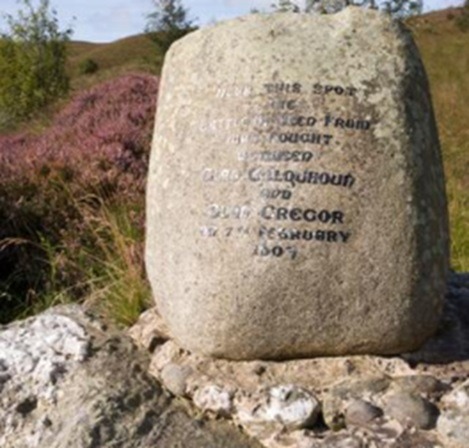



February 7th 1603 saw the Battle of Glen Fruin the battle that led to a ban on MacGregors.
This Clan battle was fought primarily between Clan Gregor and Clan Colquhoun, the latter being associated with the area around Luss. A nearby cairn in a field was long thought to mark the burial place of the Colquhouns who had died in the battle, but it turned out instead to be of Bronze Age date.
Like all good, or bad fights there are two versions to the story, there are also two dates, nothing unusual in my posts! The other date is the 8th, so we aren't out by much, I've plumped for the 7th.
Fought near Loch Lomond the Battle left at least 140 men dead and led to an unparalleled campaign of punishment against the MacGregors with the name banned in Scotland for a total of 150 years. The battle was supposedly fought on a large flat piece of ground near Auchingaich with the members of the poorer Clan Gregor pitched against their wealthy and influential Colquhoun neighbours.
The two clans had history. Clan Gregor, which was stripped of much of its land by Robert the Bruce , frequently raided their neighbour’s property. Tradition dictates that the battle was sparked after two MacGregor men were refused shelter on Colquhoun land and resorted to sleeping in an outhouse and slaughtering a sheep. Walter Scott wrote about it in the introduction to his novel Rob Roy.
After being discovered by the Laird of Luss, they were sentenced to death with their kinsmen mobilising in furious response. However, some believe this version of events has been fancified over the years with no evidence that the executions occurred. Scott hasn't helped in his book which says "two of the Macgregors being benighted, asked shelter in a house belonging to a dependent of the Colquhouns, and were refused. They then retired to an outhouse, took a wedder from the fold, killed it, and supped off the carcase, for which they offered payment to the owner. The Laird of Luss, however, unwilling to be propitiated by the offer made to his tenant, seized the offenders, and by the summary process which feudal barons had at their command, caused them to be condemned and executed. The Macgregors verify this account of the feud by appealing to the proverb current among them execrating the hour (mult dhu an earbail ghil), that the black wedder with the white tail was ever lambed".A wedder is an old Heilan term for a castrated sheep.
Others have argued that the Battle of Glen Fruin began with just another MacGregor raid. Similar plundering expeditions were launched in the weeks before with two Colquhoun men allegedly killed at Glenfinlas a couple of months before. The difference was that on this day 1603, the Colquhouns were ready to protect themselves with permission granted by James VI to pursue their foes. The Colquhoun ranks were swelled by men from Dumbarton and Cardross, with the clan marching into the glen with as many as 500 men on foot and 300 on horseback.
Clan Gregor had around 350 men ready to fight and showed no mercy for their foes. The MacGregors launched a downhill surprise attack on the Colquhouns, which drove them back in the direction they had come, namely the Auchengeich Glen. Unfortunately for the Colquhouns the second part of the MacGregor force was lying in wait for them there. Just as there are doubts over the numbers in the two opposing forces, so there are also doubts as to how many were killed. A fairly commonly accepted figure is that 140 of the Colquhouns and their allies were killed, although some accounts have put the number as high as 200.
Eighty horses, 600 hundred cows and 800 hundred sheep were taken in the aftermath of the battle with houses and corn-yards burned. Following the bloodshed, James VI, in a bid to dismantle the clan, forced MacGregors - and Gregors - to drop their name or risk punishment by death, I posted about this a few days ago.
A royal warrant was signed by James VI on February 24, 1603, accusing the MacGregors of attacking members of Clan Colquhoun at Glen Fruin “without pitie or compassion” or regard for young or old. Their deeds were “barbarous and horrible” with this “wicked and unhappy” race to be “exterminat and ruttit out”.
Less than two months later, around April 3rd, James VI ruled the name MacGregor should be “altogether abolished” and that all people of the clan should renounce their name and take another, under the pain of death. Aliases, including Grant, Stewart and Ramsay were used. Rob Roy MacGregor himself is known to have taken his mother's surname, Campbell when this happened.
Around a year later, Alastair of Glenstrae and 11 leading clan figures were hung at the Mercat Cross in Edinburgh, with the leader hoisted above his men before being drawn and quartered The MacGregor name was restored in 1661 by Charles II but disallowed once more in 1693 by William of Orange.
It was not till 1784 that the MacGregors were allowed to resume their own name, and were restored to all the rights and privileges
The memorial stone in the photo stands in Glen Fruin to mark the Colquhouns that died.
You can read much more on this here http://glendiscovery.com/glenfruin-geography.html
17 notes
·
View notes
Text

The Land of Legends - by John Mc Sporran
The Trossachs area of Scotland is a place of myth and legend. On the left in picture is Ben Venue - the mountain of the goblins. As recently as the 16th Century CE, The Urisks (Goblins) were sighted living in caves on the mountain. The Faerie Queen has her palace nearby under the Faerie Knowe. The Lady of the Lake lived on Ellen's Isle on Loch Katrine (below) and the ancient Kings of Scotland would hunt deer and wild boar in the forests. The 'outlaw' Rob Roy MacGregor raided up and down the loch in the birlinns (war galleys) of Clan MacGregor and he was born at Glengyle at the head of the loch. Queen Victoria had a small lodge on the (left) shore of the loch (it's still there). Nearby in the small town of Callander are the remains of Roman forts from the 1st Century CE. The photo was taken from Ben A'an on my 31st climb of the mountain.

Ben A'an - by John Mc Sporran
Ben A'an - the miniature mountain - in the heart of The Loch Lomond and Trossachs National Park, Scotland. I frequently climb Ben A'an for sunrise and sunset, its one of the best viewpoints in Scotland. This photo follows my rules for taking a 'selfie' - Don't look at the camera, no close ups, take it in an iconic location, try to look heroic (even if you're knackered after the climb).
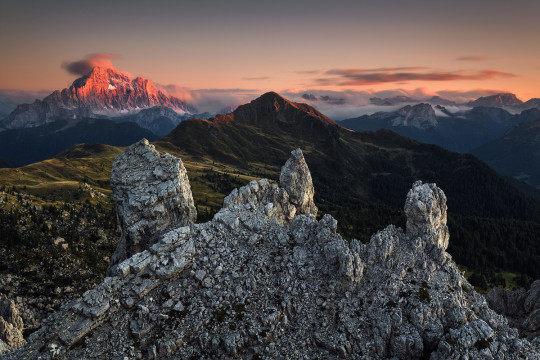
Alp Impressions - by Lucas Furlan

Alp Impressions - by Lucas Furlan

Alp Impressions - by Lucas Furlan
0 notes
Text
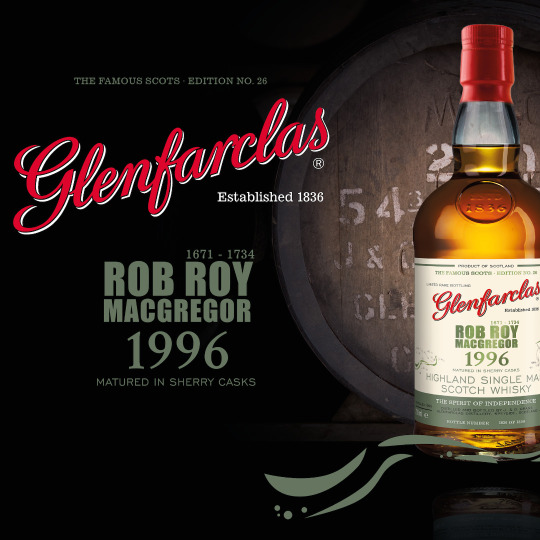
Glenfarclas Whisky The Famous Scots Editon No.26 Rob Roy MacGregor
Glenfarclas is one of the last independent distilleries in the Scottish Highlands and has been run by the Grant family for over 150 years. The distillery is renowned for its traditional approach and love of craftsmanship, which is reflected in the outstanding quality of its whiskies. Glenfarclas whiskies are known for their maturation in Oloroso sherry casks, which gives them deep flavours of dark chocolate, dried fruits and spicy nuances.
The Glenfarclas whisky The Famous Scots Edition No. 26 is a limited special bottling and is part of the popular Famous Scots Edition. The series honours well-known figures from Scottish history and culture, and this special bottling is dedicated to the fascinating figure of the legendary Rob Roy MacGregor, one of Scotland's most famous folk heroes and rebels.
1 note
·
View note